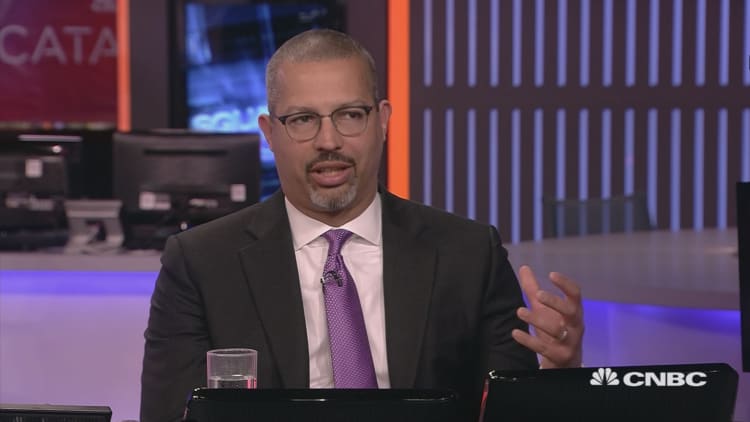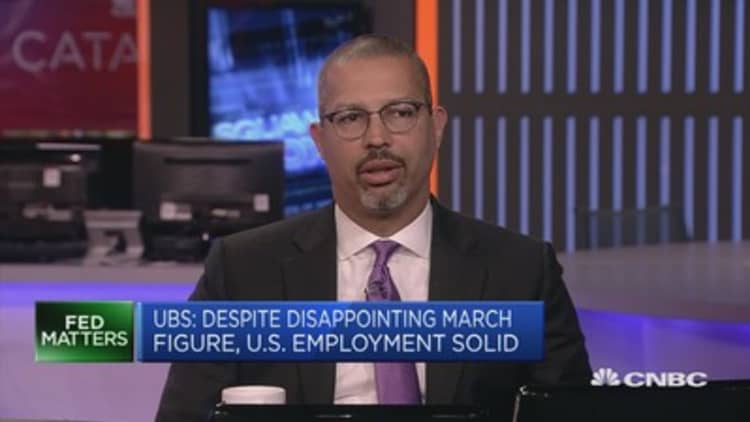
Sovereign bonds will still prove popular for investors over the next two years and a sharp sell-off in fixed income will fail to materialize, an economist at UBS told CNBC Thursday.
The 10-year U.S. Treasury yield — which moves inversely to the price — has recently sparked some nervousness among investors. Stellar employment and inflation data in the U.S. earlier this year had prompted some predictions that prices were picking up at a faster pace than markets were expecting.
This caused the yield on the 10-year Treasury note to hit new multi-year highs. At one point in February, it rose above 2.9 percent — a four-year high which caused a pullback in equity markets. Generally speaking, a higher yield is deemed negative for stocks, as companies have to pay more to finance their debts.
Nonetheless, according to Seth Carpenter, chief U.S. economist at UBS, there is no reason for concern.
"We are not going to break through 3 percent on the 10-year this year or even next year," he told CNBC's "Squawk Box Europe."
"The (Federal Reserve) is now hiking interest rates," he noted. "They want inflation to get to their target but not much above, and they're on the case," Carpenter added.

Minutes from the March meeting revealed Wednesday that the Fed sees the economy growing at a solid pace and inflation gaining ground as well. As a result, policymakers support "a gradual" increase in interest rates.
The central bank decided last month to raise rates by a quarter-point, taking the target range to 1.5 and 1.75 percent. The current market expectation is that the Fed will raise rates once again in June and again in September.
"The Fed really seems it's going to be containing inflation, so there's not a whole lot of need for the 10-year to sell-off," Carpenter added.
On Wednesday, the bond market reacted to news of a potential international missile strike in Syria. President Donald Trump taunted Russia with the threat of imminent military action in the war-torn country.
As a result, investors looked for perceived safer options and fled into fixed income. This led to a drop in Treasury yields and an increase in bond prices. A consumer prices report also pushed yields lower after the numbers came in slightly lower than markets had anticipated.


